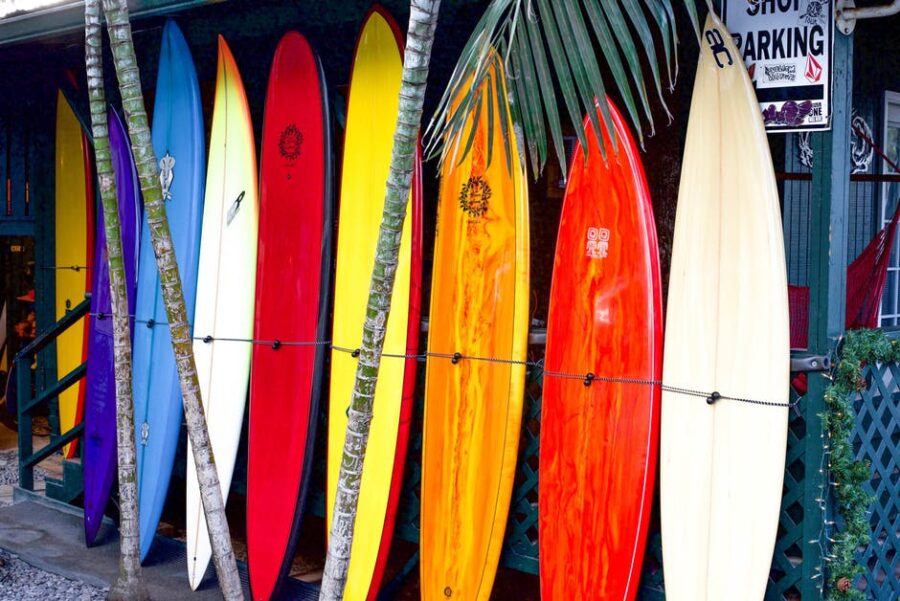A Quick Guide to the Different Types of Surf Boards

There are 35 million surfers across the world, while around 1.73 million Americans go surfing at least once every year.
If you’re thinking of joining them, as well as learning the ropes of catching a wave, you’ll need to know a little about the different types of surfboards out there. Not least because certain surfboard shapes, sizes, and materials can be better suited to beginners while others are for experienced surfers only.
So, what should you know before you buy a surfboard? Let’s find out in this handy surfboard guide!
Comparing Different Materials
You can find surfboards in a variety of different materials. The most common are soft-top foam, wood, polyurethane, and epoxy:
- Soft-Top Foam – Foam boards are buoyant, stable, low-maintenance, and affordable, making them ideal for beginners. That said, you often get what you pay for as they only last a couple of years
- Wood – As well as being more eco-friendly, a wooden surfboard will last a lifetime if you take care of it. The craftmanship involved makes them more expensive though, plus their weight can make them tough to maneuver
- Polyurethane – Poly surfboards are easy to fix, inexpensive, flexible, and heavy enough to handle choppy waters. That said, they’re also easy to damage and can be difficult for beginners to maneuver
- Epoxy – While they’re more eco-friendly than polyurethane boards, durable, and lightweight, rigid epoxy boards are less stable in rough conditions and tend to be less responsive
If you’re a beginner, by far the best material to go for is soft-top foam. Once you get more confident or your foam-top starts to show signs of wear and tear, one of the best tactics is to rent different types of surfboards via this website. This way you can choose a surfboard material you already know you like.
Comparing Different Surfboard Shapes and Sizes
Surfboards tend to fall into five basic categories. These are shortboards, fish boards, longboards, funboards, and guns:
- Shortboards – These are five to seven feet long and are great for tricks and turns. It’s hard to learn to surf on one though, so they’re best for intermediate to advanced surfers
- Fish Boards – Fish boards are around the same length as shortboards but they’re wider, thicker, and have a notched tail. Again, fish boards are better for more experienced surfers, but work well when the surf is slow and small
- Longboards – These are around nine feet in length and are perfect for every skill level. As well as being stable and easy to paddle, longboards are great for catching waves
- Funboards – Falling somewhere between shortboards and longboards in length and ease of use, funboards are great for transitioning thanks to their extra stability and maneuverability
- Guns – Made for surfing huge, powerful waves, guns are for skilled surfers only. They can be as long as longboards but have a pointed tip for cutting through the water
Beginners should always learn to surf on a longboard. Once you’re ready, your next step will likely be a funboard. Then, you may want to try out a fish board or a shortboard to see what moves you can pull off.
Different Types of Surfboards
If you’re still fairly new to the world of surfing it can feel a little daunting to buy a surfboard.
But, with this quick guide on the different types of surfboards to help you, it should now be a lot easier to choose a surfboard that suits your skill level.
Want more lifestyle updates and advice? Be sure to check out our other blog posts for more tips and tricks!